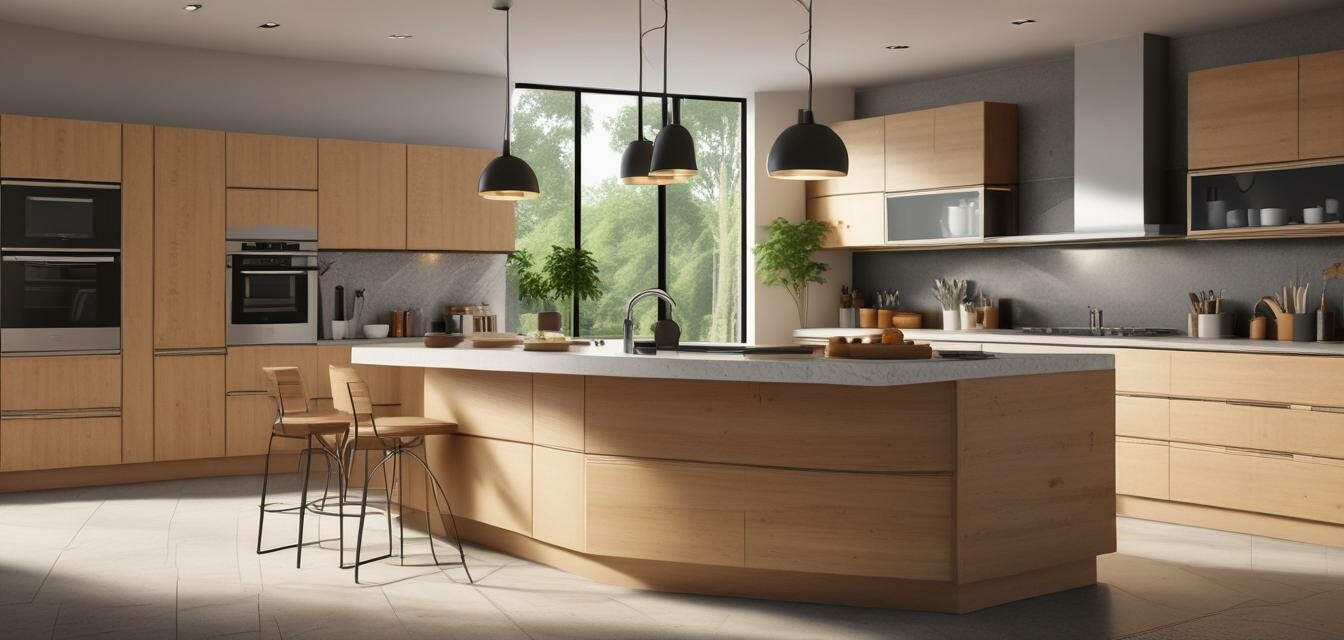
Kitchen Trends to Watch in 2025
- Focus on eco-friendly materials is increasing.
- Homeowners are prioritizing smart kitchen technologies.
- Open-plan kitchens with multifunctional spaces are gaining traction.
- Emphasis on energy efficiency is shaping buying choices.
As we approach 2025, the kitchen design landscape is set to transform with exciting new trends. Homeowners are becoming more conscious of sustainability and seeking innovative solutions that not only enhance functionality but also pay homage to the environment. Here’s what you can expect to see in the world of kitchen design.
Sustainability takes center stage
Sustainability is not merely a buzzword; it’s becoming a core principle in kitchen design. Homeowners want to reduce their environmental impact, leading to a surge in eco-friendly kitchenware. This trend is evidenced by the rising popularity of materials such as:
- Bamboo kitchenware
- Compostable kitchen tools
- Recycled glass dinnerware
Innovative materials
More manufacturers are utilizing innovative materials that minimize waste and promote sustainability. Some of these include:
| Material | Benefits |
|---|---|
| Bamboo | Fast-growing, renewable resource. |
| Recycled Glass | Reduces landfill waste and energy consumption. |
| Compostable Bioplastics | Breaks down naturally, reducing plastic pollution. |
Smart kitchen technologies
The integration of smart technologies in kitchen designs is changing how we cook and manage our culinary spaces. Homeowners are embracing:
- Smart refrigerator technology
- AI-enabled cooking appliances
- Energy management systems
The convenience of automation
From connecting to smart assistants that help with recipes to kitchen appliances that can communicate with each other, automation offers unparalleled convenience. This shift towards high-tech kitchens not only makes cooking easier but also aids in energy efficiency.
Open-plan designs and multifunctional spaces
The shift towards open-plan kitchens remains strong, allowing for greater interaction among family members and guests. Here are some trends driving this change:
- Increased use of kitchen islands for dining and workspace
- Incorporating living plants as decor
- Sustainable materials used in furniture to blend aesthetics with function
Creating a social hub
The kitchen is often the heart of the home. Transitioning towards open-plan designs encourages communication and enhances the culinary experience. This trend supports a more social kitchen atmosphere while maintaining functionality.
Energy efficiency becomes paramount
As energy costs rise and climate concerns become more critical, homeowners are prioritizing energy-efficient appliances. Key areas of focus include:
- Energy-efficient cooktops and ovens
- LED lighting for better energy consumption
- Water-saving fixtures and dishwashers
Long-term benefits of energy efficiency
Investing in energy-efficient appliances not only lowers utility bills but also contributes towards a more sustainable lifestyle. Consumers are more likely to make eco-friendly choices when renovating their kitchens.
Conclusion
The kitchen design trends emerging in 2025 reflect a growing desire for sustainability, innovation, and practicality. By embracing eco-friendly materials, smart technologies, versatile designs, and energy-efficient appliances, homeowners can create spaces that are not only functional but also good for the planet.
Pros
- Supports environmental sustainability
- Enhances convenience and automation in the kitchen
- Creates a welcoming social space
- Reduces long-term costs via energy efficiency
Cons
- Initial investment costs may be high
- Technological learning curve for smart appliances
- Maintenance for eco-friendly materials can be different
For further reading on eco-friendly kitchenware, check out our bamboo kitchenware and energy-efficient appliances sections or learn more about the benefits of compostable kitchen tools in your kitchen. Stay tuned for more insights and tips by exploring our buying guides for the latest trends in sustainable kitchenware.


